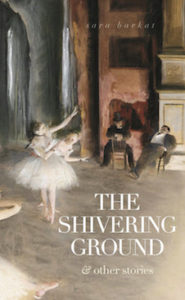< Return to Kahlil Gibran Poems
The Great Longing
Here I sit between my brother the mountain and my sister the sea.
We three are one in loneliness, and the love that binds us together is deep and strong and strange. Nay, it is deeper than my sister’s depth and stronger than my brother’s strength, and stranger than the strangeness of my madness.
Aeons upon aeons have passed since the first grey dawn made us visible to one another; and though we have seen the birth and the fullness and the death of many worlds, we are still eager and young.
We are young and eager and yet we are mateless and unvisited, and though we lie in unbroken half embrace, we are uncomforted. And what comfort is there for controlled desire and unspent passion? Whence shall come the flaming god to warm my sister’s bed? And what she-torrent shall quench my brother’s fire? And who is the woman that shall command my heart?
In the stillness of the night my sister murmurs in her sleep the fire-god’s unknown name, and my brother calls afar upon the cool and distant goddess. But upon whom I call in my sleep I know not.
Here I sit between my brother the mountain and my sister the sea. We three are one in loneliness, and the love that binds us together is deep and strong and strange.
—Kahlil Gibran
About Kahlil Gibran
Khalil Gibran (جبران خليل جبران) was a writer, visual artist, and poet with a prolific collection of work. He was born in 1883 in a village in the Mount Lebanon Mutasarrifate and in 1893 moved with his family to the United States where he enrolled in school in Boston, then went back home when he was fifteen to enroll in the Collège de la Sagesse. In 1902 he came back to Boston, and two years later his artwork was displayed for the first time. In 1905 he published his first book, and after that studied art in Paris for three years. Gibran wrote books in both Arabic and English, including poems, plays, fables, short stories, and political essays.
His cousin, Kahlil G. Gibran, a sculptor, described his work in this way. “Ignoring much of the traditional vocabulary and form of classical Arabic, he began to develop a style which reflected the ordinary language he had heard as a child in Besharri and to which he was still exposed in the South End [of Boston]. This use of the colloquial was more a product of his isolation than of a specific intent, but it appealed to thousands of Arab immigrants.” (Robin Waterfield, 1998) He was inspired by the King James Bible, the works of William Blake, whose drawings were in Gibran’s opinion “so far the profoundest things done in English.” (Joseph Ghougassian, 1973) Other inspirations included Francis Marrash (فرنسيس بن فتح الله بن نصر الله مرّاش), Walt Whitman, and Friedrich Nietzsche.

“Self Portrait and Muse” by Khalil Gibran
With visual art Gibran worked in oils, pencil, ink, watercolor, and gouache, and created more than seven hundred pieces of visual art. His work is featured in a number of museums, and his work The Prophet has been translated into more than 100 languages and has never been out of print, becoming popular in the American counterculture and New Age movement. The book was admired by Elvis Presley, John Lennon, Johnny Cash, David Bowie, Gilad Hochman (גילעד הוכמן) and Dana Al Fardan. Gibran has museums, memorials, schools, a garden, and a crater on Mercury named after him.
I hope you enjoyed The Great Longing by Kahlil Gibran! If you liked The Great Longing by Kahlil Gibran, you might enjoy more poems by him below.
< Return to Khalil Gibran Poems
“Stunning…from start to finish. Barkat is a fierce new voice.”

